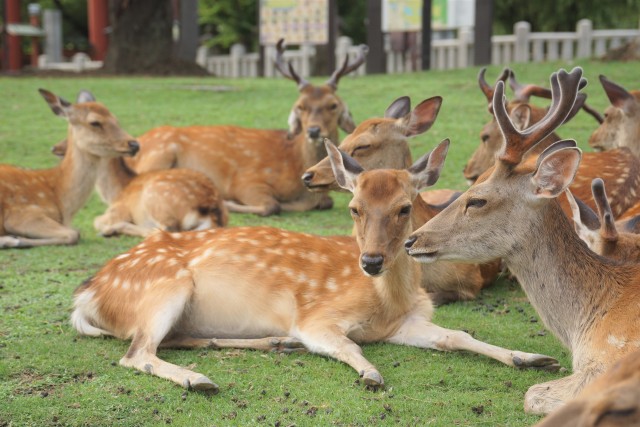
The animals behave differently this summer.
Every summer a bizarre phenomenon called “shikadamari” takes place in Nara Park, and our local reporter K. Masami has been documenting the event for the past few years.
Shikadamari literally translates to “deer pool” and it’s used to describe the gathering of deer that occurs in the summer months, when the animals relax on a particular patch of grass at the same hour, and for the same amount of time each day.
The unusual behaviour has been baffling local residents for years, with even the Nara Deer Preservation Foundation, who looks after the animals, unable to explain why the deer do what they do. So Masami has been on a mission of her own, recording the slight changes in start and end times from year to year, and noting the weather conditions at the same time in an effort to link the two.
As has been the case in previous years, this year’s shikadamari started earlier than the year before. While the deer used to gather on the grass in front of the Nara National Museum in July and August, in recent years the animals have been appearing from the end of May, or at the latest in mid-June.
This year, there were many days when the temperature exceeded 30 degrees Celsius (86 degrees Fahrenheit) in June, and when Masami spotted them at their spot during that time, she felt that rising temperatures and a desire to stay cool might definitely be a factor in why the deer gather here. Masami was curious to find out the end-date for the gathering, though, so she popped by on a mid-July evening when the maximum daily temperature reached over 30 degrees Celsius, and found that the deer were still meeting there, with a group of fascinated onlookers taking photos of them.
At 6:30 p.m., the deer took their place on the lawn and relaxed. At a rough count, there were about 60 animals at the gathering.
This was less than half the number of an average year, and Masami was surprised to see so few deer here, especially after the enormous numbers she witnessed back in 2019 and 2020.
▼ In 2019 there was barely a spare patch of green to be seen.
▼ The same spot in 2020.
▼ This year, a very different sight.
In case the low numbers might have been due to a July anomaly, Masami returned at the beginning of August to see if the animals might appear in greater numbers. However, when she returned on 12 and 13 August, when the deer gathering is usually in full swing, she found…there were no deer there at all.
Masami patiently waited at the spot until 7:30 p.m., and a few animals finally gathered, but there were only 26 of them. This was more like a puddle than a pool of deer, so she would hardly call it a shikadamari.
Masami wasn’t the only one surprised by the absence of the animals, with others around her murmuring, “How strange!” to each other. It wasn’t like there no deer in that area of the park, as there were plenty of them nearby, but they were all nibbling on grass rather than relaxing on the lawn as they usually do.
Has there ever been a year like this? Masami doesn’t think so. This is the earliest end-date for the gathering she’s seen in recent years, when rain on the day wasn’t an influencing factor, and she wasn’t sure what could’ve caused it. It might’ve been due to recent rain, or the heat of the season peaking earlier than usual, but one major difference Masami noticed this year was an increase in the number of visitors in the park.
In the previous three years, visitor numbers dropped dramatically due to the pandemic, and during that time the number of deer gathering at the spot became greater than ever before. Now, with more people travelling this summer, Masami thinks the deer gathering might be related to visitor numbers — with more tourists to feed them their carb-rich senbei, the animals might have more energy at the end of the day to graze rather than conserve energy by staying still on the lawn.
It’s not an exact science but it’s something Masami thinks is notable, having observed the animals in the park frequently over the past three years. With the Nara Deer Preservation Foundation no closer to understanding the ebbs and flows of shikadamari, nor why it occurs, Masami’s yearly observations are the best thing we have right now for looking at possible explanations for the animals’ behaviour. If you or anyone you know has any more information, please let us know!
Photos © SoraNews24
● Want to hear about SoraNews24’s latest articles as soon as they’re published? Follow us on Facebook and Twitter!

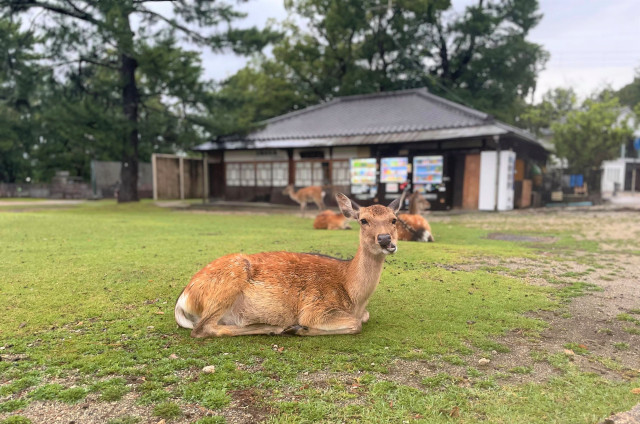
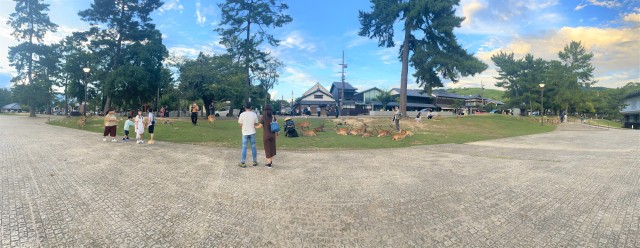
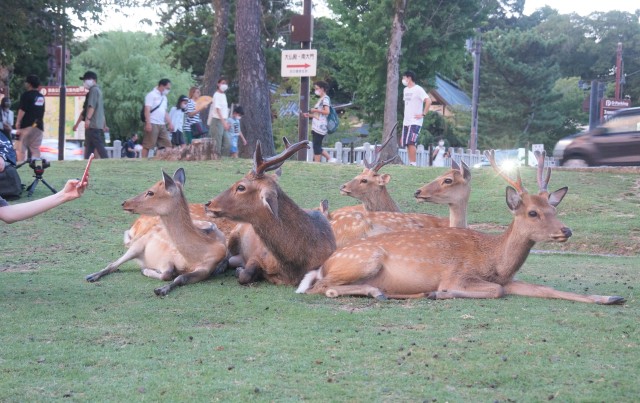
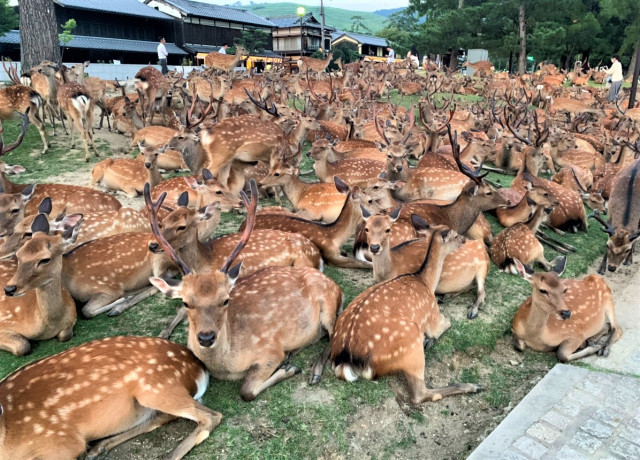
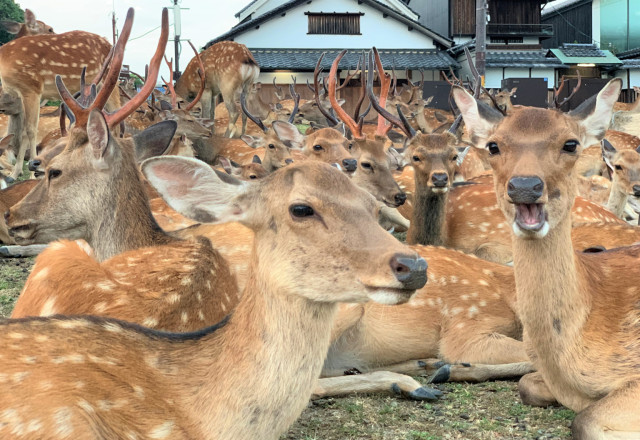
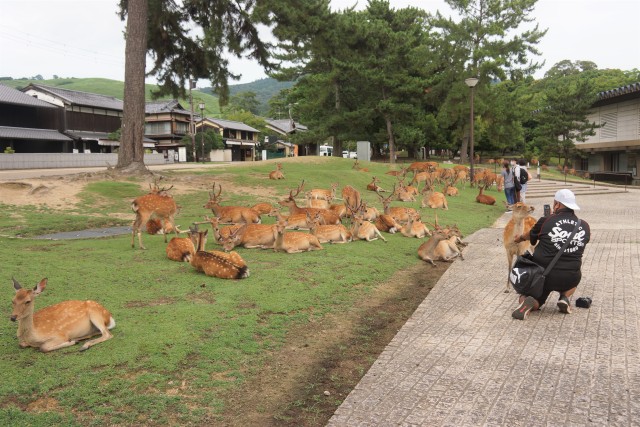
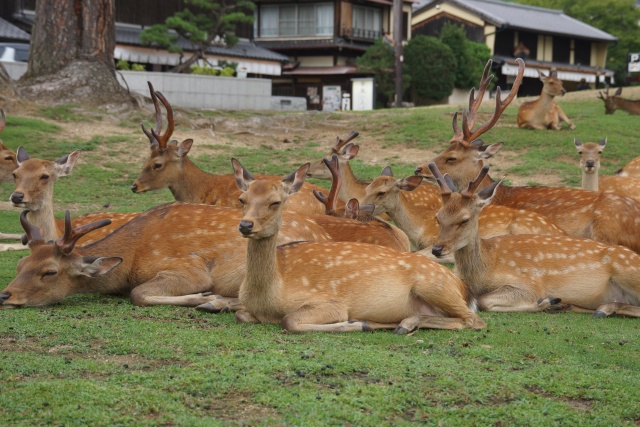
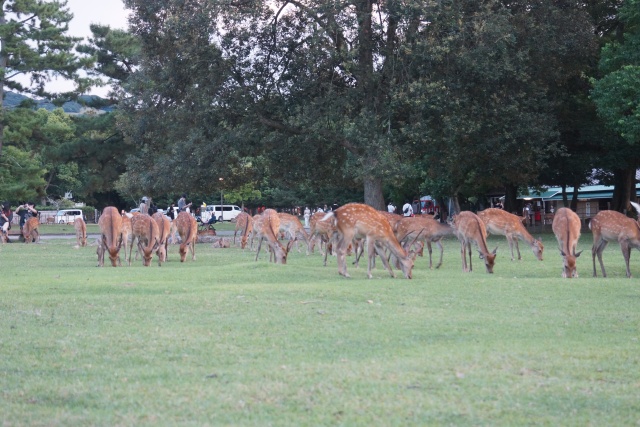
 Deer in Nara Park mysteriously disappear during this year’s shikadamari season
Deer in Nara Park mysteriously disappear during this year’s shikadamari season Nara deer shikadamari mystery deepens as tourists return to Nara park
Nara deer shikadamari mystery deepens as tourists return to Nara park Deer in Nara Park outnumber visitors, display baffling summer gathering behaviour
Deer in Nara Park outnumber visitors, display baffling summer gathering behaviour Nara deer “addicted” to rice crackers, lose weight with no tourists to feed them
Nara deer “addicted” to rice crackers, lose weight with no tourists to feed them Nara asks visitors to stop feeding the deer
Nara asks visitors to stop feeding the deer Foreigner’s request for help in Tokyo makes us sad for the state of society
Foreigner’s request for help in Tokyo makes us sad for the state of society Japanese city loses residents’ personal data, which was on paper being transported on a windy day
Japanese city loses residents’ personal data, which was on paper being transported on a windy day Harajuku Station’s beautiful old wooden building is set to return, with a new complex around it
Harajuku Station’s beautiful old wooden building is set to return, with a new complex around it Red light district sushi restaurant in Tokyo shows us just how wrong we were about it
Red light district sushi restaurant in Tokyo shows us just how wrong we were about it Akihabara pop-up shop sells goods made by Japanese prison inmates
Akihabara pop-up shop sells goods made by Japanese prison inmates Sandwiches fit for a sumo served up in Osaka【Taste Test】
Sandwiches fit for a sumo served up in Osaka【Taste Test】 Historical figures get manga makeovers from artists of Spy x Family, My Hero Academia and more
Historical figures get manga makeovers from artists of Spy x Family, My Hero Academia and more Creator of Rurouni Kenshin anime/manga admits to possession of child pornography
Creator of Rurouni Kenshin anime/manga admits to possession of child pornography Why Japanese doesn’t need swear words
Why Japanese doesn’t need swear words Harajuku Station will be demolished after the Tokyo Olympics and Paralympics
Harajuku Station will be demolished after the Tokyo Olympics and Paralympics McDonald’s new Happy Meals offer up cute and practical Sanrio lifestyle goods
McDonald’s new Happy Meals offer up cute and practical Sanrio lifestyle goods Japanese ramen restaurants under pressure from new yen banknotes
Japanese ramen restaurants under pressure from new yen banknotes French Fries Bread in Tokyo’s Shibuya becomes a hit on social media
French Fries Bread in Tokyo’s Shibuya becomes a hit on social media Studio Ghibli releases new action figures featuring Nausicaä of the Valley of the Wind characters
Studio Ghibli releases new action figures featuring Nausicaä of the Valley of the Wind characters New private rooms on Tokaido Shinkansen change the way we travel from Tokyo to Kyoto
New private rooms on Tokaido Shinkansen change the way we travel from Tokyo to Kyoto Tokyo Tsukiji fish market site to be redeveloped with 50,000-seat stadium, hotel, shopping center
Tokyo Tsukiji fish market site to be redeveloped with 50,000-seat stadium, hotel, shopping center All-you-can-drink Starbucks and amazing views part of Tokyo’s new 170 meter-high sky lounge
All-you-can-drink Starbucks and amazing views part of Tokyo’s new 170 meter-high sky lounge Beautiful Ghibli sealing wax kits let you create accessories and elegant letter decorations【Pics】
Beautiful Ghibli sealing wax kits let you create accessories and elegant letter decorations【Pics】 Studio Ghibli releases Kiki’s Delivery Service chocolate cake pouches in Japan
Studio Ghibli releases Kiki’s Delivery Service chocolate cake pouches in Japan New definition of “Japanese whiskey” goes into effect to prevent fakes from fooling overseas buyers
New definition of “Japanese whiskey” goes into effect to prevent fakes from fooling overseas buyers Our Japanese reporter visits Costco in the U.S., finds super American and very Japanese things
Our Japanese reporter visits Costco in the U.S., finds super American and very Japanese things Studio Ghibli unveils Mother’s Day gift set that captures the love in My Neighbour Totoro
Studio Ghibli unveils Mother’s Day gift set that captures the love in My Neighbour Totoro More foreign tourists than ever before in history visited Japan last month
More foreign tourists than ever before in history visited Japan last month New Pokémon cakes let you eat your way through Pikachu and all the Eevee evolutions
New Pokémon cakes let you eat your way through Pikachu and all the Eevee evolutions Sales of Japan’s most convenient train ticket/shopping payment cards suspended indefinitely
Sales of Japan’s most convenient train ticket/shopping payment cards suspended indefinitely Sold-out Studio Ghibli desktop humidifiers are back so Totoro can help you through the dry season
Sold-out Studio Ghibli desktop humidifiers are back so Totoro can help you through the dry season Japanese government to make first change to romanization spelling rules since the 1950s
Japanese government to make first change to romanization spelling rules since the 1950s Ghibli founders Toshio Suzuki and Hayao Miyazaki contribute to Japanese whisky Totoro label design
Ghibli founders Toshio Suzuki and Hayao Miyazaki contribute to Japanese whisky Totoro label design Doraemon found buried at sea as scene from 1993 anime becomes real life【Photos】
Doraemon found buried at sea as scene from 1993 anime becomes real life【Photos】 Tokyo’s most famous Starbucks is closed
Tokyo’s most famous Starbucks is closed One Piece characters’ nationalities revealed, but fans have mixed opinions
One Piece characters’ nationalities revealed, but fans have mixed opinions We asked a Uniqlo employee what four things we should buy and their suggestions didn’t disappoint
We asked a Uniqlo employee what four things we should buy and their suggestions didn’t disappoint Princesses, fruits, and blacksmiths: Study reveals the 30 most unusual family names in Japan
Princesses, fruits, and blacksmiths: Study reveals the 30 most unusual family names in Japan Nara deer leave park, head to station for food as tourist numbers tumble due to coronavirus
Nara deer leave park, head to station for food as tourist numbers tumble due to coronavirus Nara deer stampede into marathon, hit runner in their path
Nara deer stampede into marathon, hit runner in their path Nara deer dies with four kilos of plastic in its stomach, tourists cautioned to feed animals properly
Nara deer dies with four kilos of plastic in its stomach, tourists cautioned to feed animals properly The poo from Nara Park’s deer is changing because of the coronavirus pandemic
The poo from Nara Park’s deer is changing because of the coronavirus pandemic An unexpected visitor stops by our cheap Japanese house in the countryside【SoraHouse】
An unexpected visitor stops by our cheap Japanese house in the countryside【SoraHouse】 Nara unveils new vending machines that sell deer crackers
Nara unveils new vending machines that sell deer crackers Nara considering increasing number of deer that can be killed each year, expanding culling zone
Nara considering increasing number of deer that can be killed each year, expanding culling zone Nara, Japanese city famous for its streets of tame deer, begins culling program within city
Nara, Japanese city famous for its streets of tame deer, begins culling program within city Deer killed by man with axe in Nara
Deer killed by man with axe in Nara Nara’s “deer cookie” rice crackers get their first price increase in 28 years
Nara’s “deer cookie” rice crackers get their first price increase in 28 years Why deer are drawn to train tracks, and how Japan is solving the problem with this simple block
Why deer are drawn to train tracks, and how Japan is solving the problem with this simple block Nara’s deer continue their summertime tradition of commandeering one of the city’s streets
Nara’s deer continue their summertime tradition of commandeering one of the city’s streets Nara Park’s first baby deer of the year has been born, is totally adorable【Video】
Nara Park’s first baby deer of the year has been born, is totally adorable【Video】 Japanese train goes viral for Nara deer decorations
Japanese train goes viral for Nara deer decorations Thinking about moving to Nara? Here are eight things that may surprise you!
Thinking about moving to Nara? Here are eight things that may surprise you!
Leave a Reply